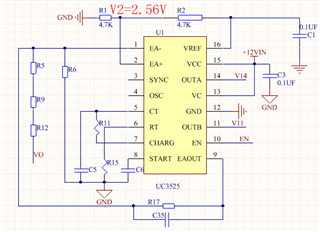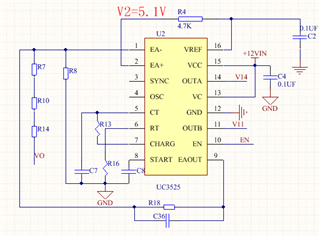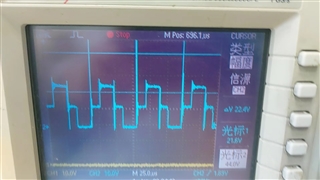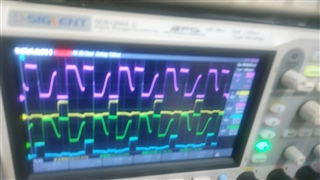Input: DC 12V (12V7AH battery)
Output: DC 110V
Full bridge field-effect transistor: IRF3205
Transformer turn ratio: Np: Ns (7:80)
PWM frequency: 15KHZ
Inductance(L3): 1mH
Capacitance(C58): 68UF/400V
The principle diagram of the push-pull converter for full bridge rectification is as follows
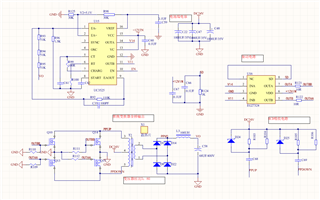
Some problems is as follows:
There are two uses for personal understanding error amplifiers
1.operational amplifier
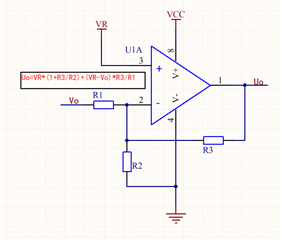
So Uo=Uo=VR*(1+R3/R2)+(VR-Vo)*R3/R1
2.comparator
R3=100K ,When the output voltage of the push-pull converter is divided by R1 and R2 resistors and greater than VR, the error amplifier output is low, and the PWM duty cycle of UC3525 is zero
Through testing, it was found that the output voltage of the first type of push-pull converter meets the requirements when it is unloaded, but when it is loaded, the Vds waveform is not good and the efficiency is low
On the contrary, according to the second connection method (comparator), its loaded Vds waveform is good and efficient
Can the voltage at the 2 pins (EA+) of the UC3525 chip be taken as about half of the reference voltage of 5.1V?
What is the impact of voltage 2.5V and 5.1V at pin 2 on the entire converter?
Limited English proficiency, please forgive any errors
My ultimate goal is to figure out whether the error amplifier is used as an operational amplifier or as a comparator. What is the impact of different reference voltages at the two pins of the error amplifier on the output voltage?
Thank you!


